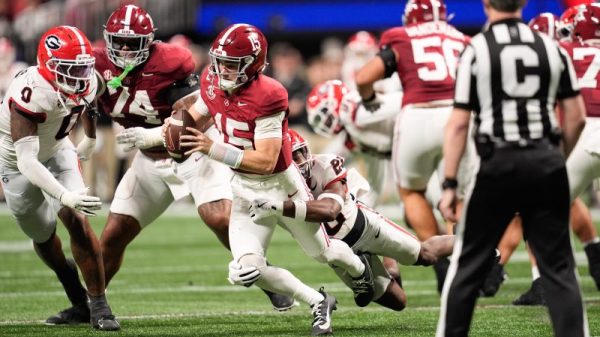In its specifics, the story is uncomplicated. Sen. Dianne Feinstein (D-Calif.) will not seek reelection in 2024, a year in which she will turn 91. This decision has been telegraphed for some time, with other California Democrats announcing unusually caveated campaigns to succeed her (“if Feinstein retires, I am pleased to announce …”). Her announcement Tuesday simply formalized the transition.
But, in broader terms, it encapsulates a unique facet of the United States at the moment. There are always younger politicians nipping at the heels of older ones. It’s unusual, though, for the Senate to be so old — just as it’s unusual for so many older Americans still to be working or holding positions that might otherwise go to younger people. Feinstein’s slow decision is one of millions of individual decisions among the country’s older population not to retire — resulting in an unusual grip on the country by an unusually large population.
Feinstein’s announcement is intertwined with a news report that came out a few hours earlier: There are more older Americans now than at any prior point in American history. More than 1 in 6 Americans were age 65 or older in 2020. By 2030, the Census Bureau expects, 1 in 5 will be.
There are two main reasons for this. The first is that American life expectancy has increased substantially over the past few decades (before dipping during the coronavirus pandemic). The second and larger reason is that the baby boom generation, which reshaped the United States every year as it grew older, is now in the middle of its retirement. Most retirees are baby boomers now, but tens of millions of boomers, nearly all of whom are 60 or older, are still working.
Consider what this older U.S. population means for the Senate, an institution that is limited in size and favors incumbency. Feinstein is not the oldest senator ever to be sworn in; that honor goes to Strom Thurmond (R-S.C.). But she is the oldest serving member of the Senate, having been born in June 1933, more than a decade before the baby boom began.
She is also one of three serving senators born in the 1930s. The second-oldest, Sen. Charles E. Grassley (R-Iowa), won reelection last year at age 89.
In recent decades, the age of senators when sworn in has been trending upward. The six-year average of the age of new senators hit 61.4 in 2021, dropping slightly in the two years since. In 1921, the six-year average was 54.9. In 1821, it was 44.4.
In part, this is thanks to incumbency. If you win election when you’re 40 and then win reelection three times, you’re being sworn in for a new term at age 58. It’s not that older people are being elected anew; it’s primarily that senators are aging.
So far this decade, more than half of the senators being sworn in for new terms were 60 or older. That was true in the 2010s as well. The aging trend has been happening since the 1970s, when senators being sworn in were unusually young.
Why? In part because the U.S. population was younger and was choosing younger candidates. You have to be 30 to be a senator and, in 1976, the first baby boomers started turning 30.
So we have an older Senate populated by a number of older senators who’ve been serving for some time. There are only 100 Senate seats in total and only two in California, so if you are a younger Californian (or even a not-that-much-younger one) hoping to enter the Senate, you simply have to bide your time. That there are more older people who can hold those positions for an extended period of time limits upward movement.
Now extrapolate this. Even assuming the likelihood of people to retire at a specific age is constant (if, for example, 50 percent of 65-year-olds always retire), a big increase in the number of 65-year-olds necessarily means more 65-year-olds continuing to work. Meaning that those jobs that would otherwise be opened up aren’t. We can extend this in other ways: If people tend to move into smaller homes after they retire, more people staying in their current homes tamps down housing availability.
This is vastly oversimplified, of course. The Senate is not like most employers. But it is clearly the case that, in other occupations, the workforce is trending older. In 2001, the median age of a U.S. worker was 39.6. In 2021, it was 41.7. In 2031, the Bureau of Labor Statistics projects, it will be 42.6. Those are jobs not available to younger workers.
We’ve heard this refrain a lot recently, including in former U.N. ambassador Nikki Haley’s announcement of her 2024 presidential bid: It’s time for generational change in politics. Again, this is often opportunistic. But it’s also a reflection of a large, younger generation feeling that its opportunities are limited because older Americans are lingering.
To those older Americans, of course, what they are doing is simply living their lives. It’s just that there are many more of them than there used to be.



























